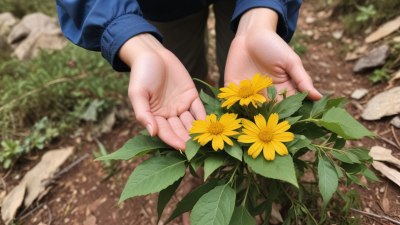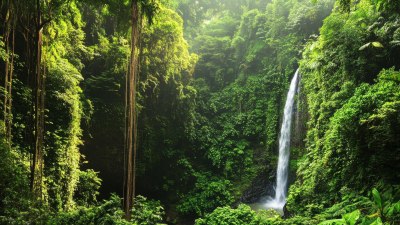Collecting and Pressing Local Flowers and Leaves on Hikes
Explore the art of collecting and pressing local flowers and leaves during hikes for a unique craft experience.

This image was created with the assistance of Freepik
Collecting and pressing local flowers and leaves during hikes is a rewarding way to connect with nature and preserve its beauty. Whether you're a seasoned hiker or a casual nature lover, this activity not only enhances your outdoor experience but also allows you to create beautiful souvenirs that you can cherish for years to come. In this guide, we will explore the techniques, tools, and tips for successfully collecting and pressing flowers and leaves while enjoying the great outdoors.
Why Collect Flowers and Leaves?
Collecting local flowers and leaves on hikes is not just about creating pressed masterpieces; it's also about connecting with the environment around you. There are various reasons to engage in this activity. For one, it encourages you to slow down and observe the delicate flora that might otherwise go unnoticed. Engaging with plants and flowers enhances your appreciation for nature and can even be a form of mindfulness. Additionally, pressed flowers and leaves can be used in various crafts such as scrapbooking, card making, or as decorative elements in your home.
What You Need for Collecting and Pressing
Before heading out on your hike, it’s essential to prepare your collection kit. Here’s a list of simple items you will need:
- Collection Bag: A lightweight bag or basket to hold your finds.
- Scissors or Pruning Shears: For snipping flowers or leaves without damaging the plant.
- Paper: Several sheets of absorbent paper, such as blotting paper or regular printer paper.
- Heavy Books: A couple of thick, heavy books to press the flowers and leaves.
- Notebook: To jot down notes about where you found each plant, including details like location and date.
Identifying Suitable Plants
When collecting flowers and leaves, it’s important to choose specimens that are fresh and free of damage. Look for plants that are at their peak bloom; wilting or dried flowers may not press well. Additionally, familiarize yourself with local flora to ensure you’re collecting plants that are safe and legal to pick. Remember to never collect endangered species or those protected by local laws. Some popular options for pressing include:
- Daisies: Simple yet beautiful, daisies press well.
- Maple Leaves: Their unique shapes and colors make them visually striking.
- Pansies: These vibrant flowers retain their color well.
Collecting Flowers and Leaves
Once your kit is ready, head out on your hike with the intent to observe and collect. As you walk, pay close attention to your surroundings. When you find a flower or leaf you’d like to collect, gently snip it close to the base while ensuring you leave some of the plant intact for it to continue growing. Place your findings immediately in your collection bag to protect them from crushing or bending. As a general rule, collect only what you need and avoid overharvesting from a single location.
Pressing Techniques
After your hike, it’s time to press your collected flowers and leaves. Here’s a simple pressing method:
- Prepare the Paper: Lay a sheet of absorbent paper on a flat surface.
- Arrange the Specimens: Place the flowers and leaves in a single layer on the paper, ensuring they don’t overlap.
- Add More Paper: Place an additional sheet of paper on top of the specimens.
- Press Down: Place a heavy book on top of the paper sandwich to apply pressure.
- Wait: Let your flowers and leaves press for at least one to two weeks to ensure proper drying.
Alternative Pressing Methods
While the book method is the most common, there are alternative ways to press flowers. One popular method involves using a flower press, which consists of two flat pieces of wood with bolt clamps to hold the specimens securely. Another method is to microwave flowers between two sheets of parchment paper, placing a weight on top for quick drying. However, be cautious with this method as it can burn the flowers if not monitored carefully.
Caring for Your Pressed Flowers
Once your flowers and leaves are pressed and dried, it's important to handle them with care. Store your pressed specimens in a dry, cool place, ideally between sheets of acid-free paper or in a sealed container, to protect against moisture and pests. If you’re planning to use them in crafts, consider coating them with a spray fixative to preserve their colors and prevent crumbling.
Creative Uses for Pressed Flowers and Leaves
Pressed flowers and leaves can be used in a multitude of creative ways. Here are some inspirational ideas:
- Art Projects: Create beautiful artwork by arranging pressed specimens in unique patterns or designs.
- Cards and Gift Wrap: Use pressed flowers as embellishments for handmade cards, gift tags, or wrapping paper.
- Home Decor: Frame pressed flowers in glass frames for stunning wall art or create a nature-themed collage.
- Bookmark Crafting: Glue pressed flowers onto sturdy card stock to make lovely bookmarks.
More Tips for Collecting and Pressing
Here are a few extra tips to enhance your flower and leaf pressing experience:
- Time of Year: Spring and summer are ideal for collecting flowers, while autumn offers vibrant leaves.
- Weather Conditions: Choose a dry day for collections; damp flowers may mold during pressing.
- Personal Reflection: Keep a nature journal to document your experiences and observe changes over time.
Always Practice Respect for Nature
While collecting flowers and leaves can be enjoyable, it’s crucial to respect the environment. Stay on marked trails to minimize your impact, and always follow Leave No Trace principles. Ensure that you’re not disturbing wildlife or damaging habitats while collecting specimens. Remember that the best nature experiences are those that focus on appreciation and sustainability.
Collecting and pressing local flowers and leaves on hikes combines the joy of nature exploration with creativity. By preparing the right tools, understanding the plants, and following proper pressing techniques, you can create beautiful memorabilia of your adventures. So grab your hiking gear, head out into nature, and start saving your floral finds!











